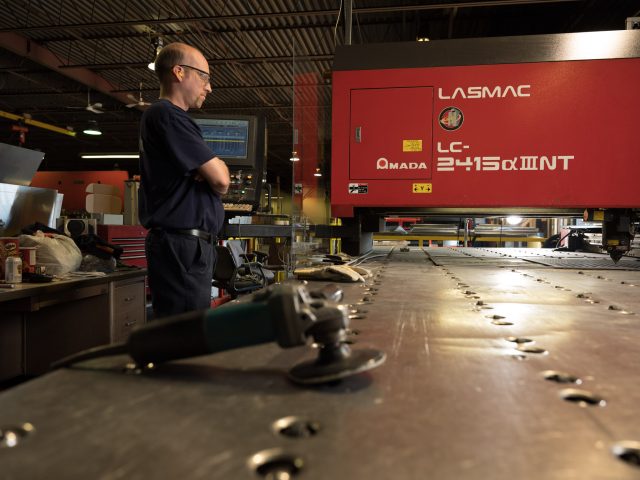Metal laser cutting services offer a fabrication method widely used in manufacturing parts and components for industries ranging from aerospace, electronics, architecture, and automotive to medical, metalworking, construction, HVAC and many other fields. Its popularity has grown in recent years due to the degree of accuracy and complexity in cutting patterns, contours, designs, and shapes with precision. The process is exceptionally efficient, cost-effective, and time-saving with the capability of producing high-quality finished products.
Metal Laser Cutting Service for Precision Parts and Components
The design requirements of parts and components have greatly expanded over the last decades. Many assemblies require much smaller and more intricate components that laser cutting presents the perfect solution for. A good example is how industries like aerospace and automotive have benefited from adapting to laser cutting services. Fabrication of custom-designed pieces like nozzles, circuit boards, solar panels and cells, and other precision parts are now efficiently produced with laser cutting.
Laser cutting has benefited such industries by opening up design possibilities once near impossible to achieve and deliver. The intricacy of the cuts, extremely precise, smooth finished edges, and the subsequent reduced material waste provides for quality finished products at a lower cost. Laser cutting produces exceptionally high levels of repeat accuracy, too, with a wide degree of flexibility in the choice of contours without any tool wear.
How Does Laser Cutting Work?
Laser cutting works by focusing a high-powered laser beam on the material. The laser, actually a highly concentrated stream of high-powered energy—photons—melts and vaporizes the target material. Once initiated, a laser beam of light emerges from an aperture through a lens to focus on a specific point. The beam pierces the target material, first cutting a hole at the edge and then, as the beam moves, slices through the material.
A typical laser’s beam width is approximately one-fifth of a millimeter and focuses 1000 to 2000 watts of energy on the material—enough to efficiently melt and slice through common metals. Lasers can cut a wide range of metals and alloys, and the beam penetrates effectively up to a depth of about 20 millimeters. That’s sufficient to handle carbon steel up to a half-inch, aluminum up to three-sixteenth of an inch or a quarter of an inch for stainless steel. For thicker materials, higher wattage settings allow for even deeper cuts.
Almost Anything Can Be Made With CNC Machining
The accuracy and smooth finishes of laser cutting machines are due to its integration with CNC technology (computer numerical control). CAD and CAM (computer-aided-design, computer-aided-manufacturing) systems convert design files and implement them into any workpiece. Once programmed, the laser tool easily carves delicate shapes, elaborate or basic cuts, and engraved designs on material surfaces. The CNC programming process allows for more intricate cutting and creative, complex designs with precision and accuracy. Accurate cuts also reduce material costs by producing less waste per single piece of material.
Investing in a metal laser cutting service offers versatility is another reason that makes it popular among fabricating shops and manufacturers. CNC programming adjusts the intensity and speed of the cutting effortlessly to provide the same accurate, precise result no matter how big the job. One machine can move from one metal to another in short order. With a simple programming change, the focus settings of the laser can be adjusted for various thicknesses to accommodate different metals. The beam’s intensity, length and heat output can be easily controlled to meet the property requirements of the material.
Full-service metal fabrication shops use laser cutting metal to achieve cuts that conventional machining tools cannot. Laser cutting is a very flexible fabricating tool that is capable of delivering highly accurate, complex shapes, designs and cuts at very high tolerances.



